Monthly Archives: November 2022
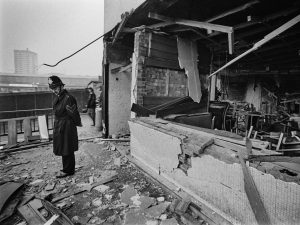 On November 21, 1974, after two Irish Republican Army (IRA) bombs exploded in two separate Birmingham pubs, killing 21 people and injuring hundreds, an investigation was opened to find the culprits. Almost immediately, the investigation centered on six men, later known as the Birmingham Six. For years the IRA and the British government had been at odds over the status of Northern Ireland, in fact you had to be hiding under a rock if you didn’t know about it. Still, on that November day, it all came to a head. The bombs exploded, destroying everything and killing or hurting everyone in sight.
On November 21, 1974, after two Irish Republican Army (IRA) bombs exploded in two separate Birmingham pubs, killing 21 people and injuring hundreds, an investigation was opened to find the culprits. Almost immediately, the investigation centered on six men, later known as the Birmingham Six. For years the IRA and the British government had been at odds over the status of Northern Ireland, in fact you had to be hiding under a rock if you didn’t know about it. Still, on that November day, it all came to a head. The bombs exploded, destroying everything and killing or hurting everyone in sight.
The most immediate reaction of the British government was to outlaw the IRA. Virtually overnight, they were declared a terrorist group in all the United Kingdom. Thus began the worst miscarriage of justice in British history. Immediately, authorities rushed to arrest and convict the IRA members who were responsible for these horrific acts. Six Irish suspects were picked up. They were Hugh Callaghan, Patrick Joseph Hill, Gerard Hunter, Richard McIlkenny, William Power, and John Walker. During interrogation, four of the men signed confessions, which made no sense, because even the IRA, which had claimed responsibility for the Birmingham bombings, said that the six were not members of its organization.
That begs the question, that if the IRA claimed responsibility and specifically said these men were part of their organization, how could these men be tried, found guilty, and sentenced. Nevertheless, they were, and they  served 16 years before something was done about it. These men declared their innocence almost from the beginning…if you take the signed confessions at face value, and assume they were not coerced. The men stated and never wavered, that the police had beaten the confessions out of them. Many people would agree. Of course, the prosecutors denied this and also came up with forensic evidence that apparently proved that the Birmingham Six had handled explosives shortly before their arrest. It appeared that they just wanted to get a conviction so things could settle down. I’m sure they were under a lot of pressure to solve the crime.
served 16 years before something was done about it. These men declared their innocence almost from the beginning…if you take the signed confessions at face value, and assume they were not coerced. The men stated and never wavered, that the police had beaten the confessions out of them. Many people would agree. Of course, the prosecutors denied this and also came up with forensic evidence that apparently proved that the Birmingham Six had handled explosives shortly before their arrest. It appeared that they just wanted to get a conviction so things could settle down. I’m sure they were under a lot of pressure to solve the crime.
Following their convictions, the men were sentenced to lengthy prison terms. In all they spent 16 years in prison, before something changed. I’m sure they thought they would never be free again, but their convictions were declared “unsafe and unsatisfactory” and quashed by the Court of Appeal on 14 March 1991. Apparently, this all came about as a result of the widespread questioning of their guilt by the British people. They started seeing that things just didn’t add up, and yet, here were these men, locked up and seemingly innocent of any crime. In the face of all this, the British authorities released the so-called “Birmingham Six.” The six Irish men who had been sent to prison 16 years earlier for the 1974 terrorist bombings of two pubs in Birmingham, England. To further prove the error, in 1985, the forensic evidence was exposed by scientists as unreliable at best!! The nightmare for the Birmingham Six was coming to an end, and the nightmare for the British government was just beginning. In 1987 an appeals judge conceded that the same results could be obtained 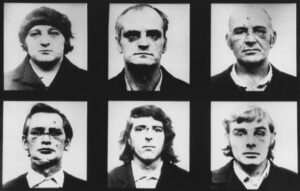 from testing people who recently touched playing cards or cigarette paper, and yet these men were convicted of a bombing based on that same lack of credible evidence. Even with all that information, it took until March 1991, before the people across Britain and Ireland began calling for their release. Finally, they were freed after years in prison. They were free, but their story didn’t end there. Seven years later, a British court of appeals formally overturned their sentences, citing serious doubts about the legitimacy of the police evidence and the treatment of the suspects during their interrogation. The six men were later awarded compensation ranging from £840,000 to £1.2 million.
from testing people who recently touched playing cards or cigarette paper, and yet these men were convicted of a bombing based on that same lack of credible evidence. Even with all that information, it took until March 1991, before the people across Britain and Ireland began calling for their release. Finally, they were freed after years in prison. They were free, but their story didn’t end there. Seven years later, a British court of appeals formally overturned their sentences, citing serious doubts about the legitimacy of the police evidence and the treatment of the suspects during their interrogation. The six men were later awarded compensation ranging from £840,000 to £1.2 million.
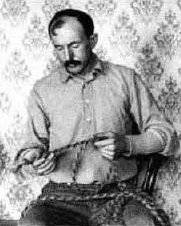 Being wrongly convicted of a crime is a nightmare that more than a few people have faced in their lifetime. As detective work and forensics have improved over the years, it happens less often, but that was not always the case. On July 18, 1901, Willie Nickell, the 14-year-old son of sheep ranchers Kels and Mary Nickell, was found murdered near their homestead gate near Iron Mountain, Wyoming. More violent incidents occurred during the period of the coroner’s inquest, which was expanded to investigate these incidents and lasted from July through September 1901. In the end investigation centered on a man named Tom Horn.
Being wrongly convicted of a crime is a nightmare that more than a few people have faced in their lifetime. As detective work and forensics have improved over the years, it happens less often, but that was not always the case. On July 18, 1901, Willie Nickell, the 14-year-old son of sheep ranchers Kels and Mary Nickell, was found murdered near their homestead gate near Iron Mountain, Wyoming. More violent incidents occurred during the period of the coroner’s inquest, which was expanded to investigate these incidents and lasted from July through September 1901. In the end investigation centered on a man named Tom Horn.
Thomas Horn Jr was born on November 21, 1860, to Thomas S Horn Sr and Mary Ann née Miller Maricha on their family farm in rural northeastern Scotland County, Missouri. Horn was an American scout, cowboy, soldier, range detective, and Pinkerton agent in the 19th-century and early 20th-century American Old West. It is believed that he committed 17 killings as a hired gunman throughout the West. Horn was convicted in 1902 of the murder of young Willie Nickell.
While Horn was convicted of the murder, it was a known fact that Willie’s dad, Kels Nickell was involved in a range feud with his neighbor and cattle rancher Jim Miller. To me, that would throw up an immediate red flag into the situation, but because Horn was a known hired gun, the jury convicted him of murder on October 24, 1901. Horn rigorously appealed the conviction, but he lost that battle, and on November 20, 1903, the infamous hired killer Tom Horn was hanged for having murdered Willie Nickell.
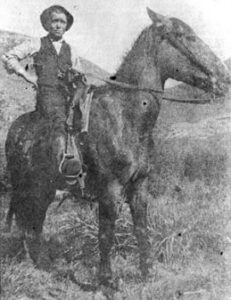 Looking back, a number of historians have questioned whether Horn really killed the boy. They have pointed out that the jury convicted him solely on the basis of a drunken confession that Horn supposedly made to a detective. The jury also seems to have failed him, by refusing to take note to the testimony of a number of credible witnesses who claimed Horn could not possibly have committed the crime. Yet even Horn’s defenders in the Nickell case do not dispute that he was a brutal hired killer who was unquestionably responsible for many other deaths. Nevertheless, he was not on trial for those other deaths. It’s quite possible that the people figured it was better to get a hired gun off the streets, even if it was for a crime he couldn’t possibly have committed…a public service of sorts, I suppose. Other historians suggest that Horn may have murdered Willie Nickell by accident, having mistaken the boy for his father. Still others argue that it is more likely that Horn was deliberately convicted for a crime he did not commit by Wyoming citizens seeing an opportunity to take revenge. We will never know for sure.
Looking back, a number of historians have questioned whether Horn really killed the boy. They have pointed out that the jury convicted him solely on the basis of a drunken confession that Horn supposedly made to a detective. The jury also seems to have failed him, by refusing to take note to the testimony of a number of credible witnesses who claimed Horn could not possibly have committed the crime. Yet even Horn’s defenders in the Nickell case do not dispute that he was a brutal hired killer who was unquestionably responsible for many other deaths. Nevertheless, he was not on trial for those other deaths. It’s quite possible that the people figured it was better to get a hired gun off the streets, even if it was for a crime he couldn’t possibly have committed…a public service of sorts, I suppose. Other historians suggest that Horn may have murdered Willie Nickell by accident, having mistaken the boy for his father. Still others argue that it is more likely that Horn was deliberately convicted for a crime he did not commit by Wyoming citizens seeing an opportunity to take revenge. We will never know for sure.

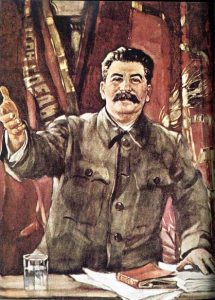 Generally speaking, a man’s word is his bond…as the saying goes, but when a man’s word can’t be trusted, well promises mean nothing, agreements mean nothing, partnership means nothing. The people who took Adolf Hitler at his word, found out the hard way, that Hitler was definitely not a man of his word. On June 22, 1941, after making an agreement, known as the Nazi-Soviet Pact of 1939, Nazi Germany at Hitler’s command, launched a massive invasion against the USSR. The agreement was basically that Germany and the USSR would not attack each other. Less than two years into the agreement, Hitler broke the agreement. He was most likely planning that invasion all along, but he needed to have the people of the USSR unaware of his plans. He needed to have them trust him, so his invasion would be a complete surprise attack.
Generally speaking, a man’s word is his bond…as the saying goes, but when a man’s word can’t be trusted, well promises mean nothing, agreements mean nothing, partnership means nothing. The people who took Adolf Hitler at his word, found out the hard way, that Hitler was definitely not a man of his word. On June 22, 1941, after making an agreement, known as the Nazi-Soviet Pact of 1939, Nazi Germany at Hitler’s command, launched a massive invasion against the USSR. The agreement was basically that Germany and the USSR would not attack each other. Less than two years into the agreement, Hitler broke the agreement. He was most likely planning that invasion all along, but he needed to have the people of the USSR unaware of his plans. He needed to have them trust him, so his invasion would be a complete surprise attack.
When he was ready, and aided by his far superior air force, Hitler sent his German army racing across the Russian plains. The German Army was given carte blanche in the invasion, and so they went about inflicting terrible casualties on the Red Army and the Soviet civilians. Of course, the German Army wasn’t alone in their attack. Their first targets of attack were Leningrad and Moscow. With the assistance of troops from their Axis allies, the Germans conquered the vast territory, and by mid-October the great Russian cities of Leningrad and Moscow were under siege. The Soviets held on, and the coming winter forced the German offensive to pause.
Hitler set his sights on the summer of 1942, and ordered the Sixth Army, under General Friedrich Paulus, to take Stalingrad in the south. Stalingrad was an industrial center and therefore, an obstacle to Nazi control of the precious Caucasus oil wells. The oil wells were a crucial part of the control process. The Army made advances across the Volga River in August, while the German Fourth Air Fleet reduced Stalingrad to burning rubble, killing more than 40,000 civilians. With the first attack behind them, Paulus ordered the first offensives into Stalingrad in September, estimating that it would take his army about 10 days to capture the city.
The ensuing battle was one of the most horrific battles of World War II. It was also quite likely the most important because it was the turning point in the war between Germany and the USSR. The USSR’s Red Army was furious and had an ax to grind over the ruined city and their lost loved ones and friends. Now, the German Sixth Army faced General Vasily Chuikov leading a bitter Red Army seeking revenge. They quickly transformed destroyed buildings and rubble into natural counter offensive fortifications. Then, using a method of fighting known as the Rattenkrieg or “Rat’s War,” the opposing forces broke into squads eight or 10 strong and fought each other for every house and yard of territory. The battle saw rapid advances in street-fighting technology. Things like a German machine gun that shot around corners and a light Russian plane that glided silently over German positions at night, dropping bombs without warning were birthed during this battle. The biggest problem the armies faced, however, was a lack of necessary food, water, or medical supplies, causing tens of thousands of soldiers to die every week.
The biggest miscalculation Hitler made was the resolve of Soviet leader Joseph Stalin, who was determined to liberate the city named after him. In November he ordered massive reinforcements to the area. On November 19, General Zhukov launched a great Soviet counteroffensive. German command underestimated the scale of the counterattack, and the Sixth Army was quickly overwhelmed by the offensive, which involved 500,000 Soviet troops, 900 tanks, and 1,400 aircraft. Within three days, the entire German force of more than 200,000 men was encircled. Before long, the Italian and Romanian troops at Stalingrad surrendered. That didn’t follow for the Germans, who hung on. Of course, Hitler would not let them surrender, so they waited…receiving limited supplies by air and waiting for reinforcements. Hitler ordered Paulus to remain in place and promoted him to field marshal, because no Nazi field marshal had ever surrendered.
The Germans lost as many lives to starvation and the bitter Russian winter, as they did to the merciless Soviet troops. Their supply line was completely cut off on January 21, 1943, when the last of the airports held by the Germans fell to the Soviets…completely cutting off their supplies. Despite Hitler’s threats, Paulus surrendered German forces in the southern sector on January 31, and on February 2 the remaining German troops surrendered. By the time Paulus surrendered, there were only 90,000 German soldiers still alive. They may 
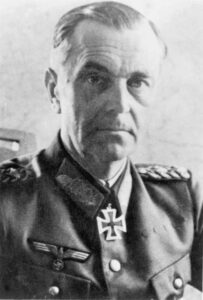 have thought they were among the lucky ones, but of the 90,000, only 5,000 survived the Soviet prisoner-of-war camps and make it back to Germany.
have thought they were among the lucky ones, but of the 90,000, only 5,000 survived the Soviet prisoner-of-war camps and make it back to Germany.
The Battle of Stalingrad was the turning point in the war between Germany and the Soviet Union. Chuikov had played such an important role in the victory. Later, it was he who led the Soviet drive on Berlin. As a reward, on May 1, 1945, he was given the right to personally accept the German surrender of Berlin. Paulus, who felt betrayed by Hitler, was among the German prisoners of war in the Soviet Union. He provided testimony at the International Military Tribunal at Nuremberg in 1946. After his release by the Soviets in 1953, he settled in East Germany.

 When the Nazis were trying to take over the world, one tool they felt was vital to their effort was the radio, or rather the control over the radio. If the Nazis could control the news people heard, they believed they could stop any resistance from the people, especially good people who didn’t want to be involved in the evil that Hitler was trying to carry out. The only way to control the situation was with the Nazi propaganda over controlled airwaves. The propaganda effort was a relatively new technology that the Nazis very likely pioneered.
When the Nazis were trying to take over the world, one tool they felt was vital to their effort was the radio, or rather the control over the radio. If the Nazis could control the news people heard, they believed they could stop any resistance from the people, especially good people who didn’t want to be involved in the evil that Hitler was trying to carry out. The only way to control the situation was with the Nazi propaganda over controlled airwaves. The propaganda effort was a relatively new technology that the Nazis very likely pioneered.
When the Germans first started their propaganda broadcasts, they were in both German and English. It was thought, by German propaganda minister, Joseph Goebbels, that since the United States had not entered the war, maybe they were still able to be turned toward German thinking. Within a few months of the breakout of World War II, German propagandists were transmitting no less than eleven hours of programming a day. In the first year of Nazi propaganda programming, broadcasters attempted to destroy pro-British feeling rather than arouse pro-German sentiment. I would assume that they were attempting to look like the innocent victim, and not the evil aggressor. These propagandists targeted certain groups, including capitalists, Jews, and selected newspapers/politicians. Doesn’t this sound like the media of today? By the summer of 1940, the Nazis, realizing that the United States would never be on their side, had abandoned all attempts to win American sympathy. The tone of German radio broadcasts quickly became critical towards the United States.
Goebbels, claimed the radio was the “eighth great power” and he, along with the Nazi party, recognized the power of the radio in the propaganda machine of Nazi Germany. Goebbels, recognizing the importance of radio in disseminating the Nazi message, quickly approved a mandate whereby millions of cheap radio sets were subsidized by the government and distributed to the German citizens. It reminds me of the “free cellphone” 
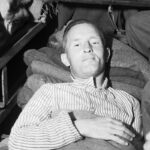 program of Barack Obama. It was Goebbels’ job to propagate the anti-Bolshevik statements of Hitler and aim them directly at neighboring countries with German-speaking minorities. In Goebbels’ “Radio as the Eighth Great Power” speech, he proclaimed, “It would not have been possible for us to take power or to use it in the ways we have without the radio…It is no exaggeration to say that the German revolution, at least in the form it took, would have been impossible without the airplane and the radio…[Radio] reached the entire nation, regardless of class, standing, or religion. That was primarily the result of the tight centralization, the strong reporting, and the up-to-date nature of the German radio.”
program of Barack Obama. It was Goebbels’ job to propagate the anti-Bolshevik statements of Hitler and aim them directly at neighboring countries with German-speaking minorities. In Goebbels’ “Radio as the Eighth Great Power” speech, he proclaimed, “It would not have been possible for us to take power or to use it in the ways we have without the radio…It is no exaggeration to say that the German revolution, at least in the form it took, would have been impossible without the airplane and the radio…[Radio] reached the entire nation, regardless of class, standing, or religion. That was primarily the result of the tight centralization, the strong reporting, and the up-to-date nature of the German radio.”
The Nazi regime began to use the radio to deliver its message to both occupied territories and enemy states, as well as domestic broadcasts. One of the main targets was the United Kingdom to which William Joyce broadcast regularly, gaining him the nickname “Lord Haw-Haw” in the process. Broadcasts were also made to the United States, notably through Robert Henry Best and Mildred ‘Axis Sally’ Gillars. As a normal practice of the Propaganda Minister’s office, the radio, just like the newspapers fell under strict German supervision during the occupation. In January 1941, Dutch stations were replaced by a single state-run broadcaster overseen by the NSB (Dutch Nazi Party). This station primarily transmitted pro-German programs.
The Dutch were not easily fooled, however. So, for news from the Allied camp the Dutch secretly listened to the BBC and Radio Oranje, the Dutch government’s radio station in exile, transmitting from London. One might wonder how that was possible, given the controls in place at the time, but people hardly paid attention to the 
 listening ban imposed by the Germans. The occupying German forces tried to jam the reception of Radio Free Orange and the BBC, but with a handy device, easily made at home, the Dutch people were able to listen to broadcasts from London very little interference. It was therefore referred to as a moffenzeef (‘Kraut filter’) or ‘German filter’ because it sifted out jamming signals. The device was of monumental significance, because it kept the people from being effectively brainwashed by rogue media forms that were controlled by an evil government. The Kraut Filter might just have been the single greatest “non-weapon” of the war.
listening ban imposed by the Germans. The occupying German forces tried to jam the reception of Radio Free Orange and the BBC, but with a handy device, easily made at home, the Dutch people were able to listen to broadcasts from London very little interference. It was therefore referred to as a moffenzeef (‘Kraut filter’) or ‘German filter’ because it sifted out jamming signals. The device was of monumental significance, because it kept the people from being effectively brainwashed by rogue media forms that were controlled by an evil government. The Kraut Filter might just have been the single greatest “non-weapon” of the war.
 Before the internet, people who wanted or needed to research a subject, for personal use or for schoolwork, had to go to the library, because they usually didn’t have the tools to research things at home, with the possible exception of a set of encyclopedias. I think many of us have had a physical set of encyclopedias, but those books had their own set of problems…the greatest being that they quickly became outdated. Of course, the internet has its own set of problems too…the greatest being misinformation and outright lies.
Before the internet, people who wanted or needed to research a subject, for personal use or for schoolwork, had to go to the library, because they usually didn’t have the tools to research things at home, with the possible exception of a set of encyclopedias. I think many of us have had a physical set of encyclopedias, but those books had their own set of problems…the greatest being that they quickly became outdated. Of course, the internet has its own set of problems too…the greatest being misinformation and outright lies.
All that aside, in the not-so-distant past, since it was still in my lifetime, research was done in the library, which is why so many schools had one of their own, at least in junior high and high school. The students, armed with a research subject went to the library and began their search. Basically, the library was the “internet” of the past. Your search would often begin with the card catalog. This was a large cabinet with very small drawers filled with cards with holes in the bottom that were attached to a rod in the bottom of the drawer. The cards were arranged alphabetically so they could be easily researched, but if the subject had a lot of information out there, that did not mean that the search would be a quick one.
Once the desired information was located, the researcher would use a slip of paper (usually provided by the  library) to write down the information the card gave as to the location of the book that housed the detailed information that had been summarized on the card. The card always contained a number such as 746.43, which was really a code for the location of the book needed by the researcher. In this case, the 7 stands for the classification…Art. The first 4 stands for the division…drawings/decorative arts. The 6 stands for the section…textile arts. The numbers following the decimal stand for classification within the section…type of textile. Armed with this information, the researcher was able to go to the section of the library that holds that classification of book and locate their book, or just as often they could go to the librarian and receive help to find their book. Of course, the biggest problem with this type of research is that the book might very likely be checked out already, especially if it was a popular subject. If the book wasn’t available, the researcher would have to wait until it came back or go start the whole process again to find another book that contained the desired information. As I’m sure you can imagine, this type of research was quite frustration, and extremely slow…especially if you had any inkling of the speed of locating information these days. Thankfully back then, no one did, so research papers were assigned weeks early, to be turned in at the end of the quarter or semester.
library) to write down the information the card gave as to the location of the book that housed the detailed information that had been summarized on the card. The card always contained a number such as 746.43, which was really a code for the location of the book needed by the researcher. In this case, the 7 stands for the classification…Art. The first 4 stands for the division…drawings/decorative arts. The 6 stands for the section…textile arts. The numbers following the decimal stand for classification within the section…type of textile. Armed with this information, the researcher was able to go to the section of the library that holds that classification of book and locate their book, or just as often they could go to the librarian and receive help to find their book. Of course, the biggest problem with this type of research is that the book might very likely be checked out already, especially if it was a popular subject. If the book wasn’t available, the researcher would have to wait until it came back or go start the whole process again to find another book that contained the desired information. As I’m sure you can imagine, this type of research was quite frustration, and extremely slow…especially if you had any inkling of the speed of locating information these days. Thankfully back then, no one did, so research papers were assigned weeks early, to be turned in at the end of the quarter or semester.
Once you had your hands on the desired book or a comparable alternative, you were required to read all or  most of the book to find the information you needed for your research project. You couldn’t simply ask the book a question and expect an answer like you can today with the computer and the internet. While today’s type of research is much easier, I’m sure there are many people who would say that the challenge of the “dig for information” is completely and sadly lost. I suppose they are right, but since I’m a techy, I would find that kind of research frustrating, since I do know about the computer and the internet. Thankfully, when I had to research information in my youth, I had no idea that the internet would exist in just a few short years, so the frustration was averted.
most of the book to find the information you needed for your research project. You couldn’t simply ask the book a question and expect an answer like you can today with the computer and the internet. While today’s type of research is much easier, I’m sure there are many people who would say that the challenge of the “dig for information” is completely and sadly lost. I suppose they are right, but since I’m a techy, I would find that kind of research frustrating, since I do know about the computer and the internet. Thankfully, when I had to research information in my youth, I had no idea that the internet would exist in just a few short years, so the frustration was averted.

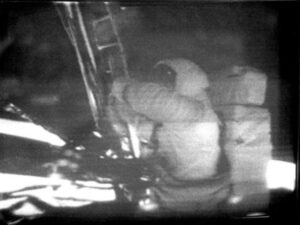 Shortages are usually problematic in one way or another, but sometimes they can be catastrophic, and sometimes, while not catastrophic, they can mean a really great loss. Shortages come in many forms, but when there is a shortage of something that is necessary, problems will result.
Shortages are usually problematic in one way or another, but sometimes they can be catastrophic, and sometimes, while not catastrophic, they can mean a really great loss. Shortages come in many forms, but when there is a shortage of something that is necessary, problems will result.
In the early 1980s, the world experienced a rather strange shortage…data tapes. This may seem rather benign kind of shortage. It seems like you could either just wait until more can be produced or come up with another way of recording the data. Well, that wasn’t the solution that NASA came up with. Their plan was to reuse data tapes that had outlived their usefulness. Some data tapes held data that was no longer important, and so NASA decided to use those data tapes for their temporary needs, until new data tapes could be procured.
The plan seemed like a good one and probably would have been, except that in their rush to find data tapes they could use, NASA accidentally recorded over the original Apollo 11 moon landing tapes. Unfortunately, these were the only copies of Apollo 11’s journey, and so a critical piece of human history was lost forever. In the 1990s, it was discovered that the Apollo 11 tapes were missing. This was a historical disaster, and an investigation was launched. Originally, NASA believed that the tapes were not lost forever as many claimed but stored somewhere in the Goddard Space Flight Center after the center requested that the National Archives return them in the early 1970s. It was determined the tapes had been erased and re-used during a data tape shortage during the early 1980s.
The lost footage brought about many claims of conspiracy theories, stating that man never walked on the moon at all. NASA finally released every photograph they had, but that didn’t really change people’s minds. They said it was all staged. It didn’t help matters, that the photos were very degraded. It seems like that is an ongoing 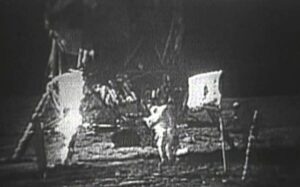
 trend. Every disaster if followed by someone saying it didn’t happen. Now, I’m not saying it isn’t possible, I’m just saying that there will always be these conspiracy theories, and I just hope that at least most of our modern-day accomplishments really did happen, because the alternative would be awful. As to Apollo 11, it is just terrible that a shortage stole an important part of our history.
trend. Every disaster if followed by someone saying it didn’t happen. Now, I’m not saying it isn’t possible, I’m just saying that there will always be these conspiracy theories, and I just hope that at least most of our modern-day accomplishments really did happen, because the alternative would be awful. As to Apollo 11, it is just terrible that a shortage stole an important part of our history.
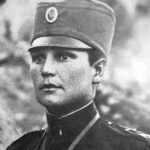 In 1913, Milunka Savic joined the Serbian army in her brother’s place, cutting her hair and donning men’s clothes. You might wonder why she would do such a thing, and why her brother didn’t go and do his duty. This story isn’t about her heroics in the face of her brother’s cowardice, but rather her heroics when her brother truly could not serve. In 1912, Milunka’s brother received call-up papers for mobilization for the First Balkan War, but at the time, he was quite ill with tuberculosis. Milunka could have just told the authorities that he was ill, and he would have been excused, but she knew that the war effort was important, so she chose to go in his place. She started her transformation by cutting her hair and started wearing men’s clothes, then she joined the Serbian army. She saw combat almost immediately, and while many women of that era would have turned tail and run, she did not. She received her first medal and was promoted to corporal in the Battle of Bregalnica. While she was engaged in battle, Milunka was wounded, and as she was being treated in the hospital, her true gender was discovered by some very surprised physicians. I suppose you could say that she hadn’t thought this part of the plan out very well, or maybe she just didn’t plan to be wounded!! Nevertheless, here she was, and she had a problem.
In 1913, Milunka Savic joined the Serbian army in her brother’s place, cutting her hair and donning men’s clothes. You might wonder why she would do such a thing, and why her brother didn’t go and do his duty. This story isn’t about her heroics in the face of her brother’s cowardice, but rather her heroics when her brother truly could not serve. In 1912, Milunka’s brother received call-up papers for mobilization for the First Balkan War, but at the time, he was quite ill with tuberculosis. Milunka could have just told the authorities that he was ill, and he would have been excused, but she knew that the war effort was important, so she chose to go in his place. She started her transformation by cutting her hair and started wearing men’s clothes, then she joined the Serbian army. She saw combat almost immediately, and while many women of that era would have turned tail and run, she did not. She received her first medal and was promoted to corporal in the Battle of Bregalnica. While she was engaged in battle, Milunka was wounded, and as she was being treated in the hospital, her true gender was discovered by some very surprised physicians. I suppose you could say that she hadn’t thought this part of the plan out very well, or maybe she just didn’t plan to be wounded!! Nevertheless, here she was, and she had a problem.
She could have been in a lot of trouble at this point, but she had proven to such a competent soldier, her commanding officers were hesitant to punish her. It was decided that they would send her to a nursing division, but Milunka informed them that she would serve her country only in combat. This had to be an amazing woman, who was far ahead of her time in the area of women in combat. While they could have insisted, I suppose they would have also lost not only a nurse, but a great soldier, so they relented, and she went back to her unit. Milunka went on to fight in three wars and earn seven medals, including the Croix de Guerre and the British medal of the Most Distinguished Order of Saint Michael. It is believed that she may in fact be the most-decorated female combatant not only in Serbia, but in the entire history of warfare. To me, Milunka Savic was not just a hero for her fighting efforts, but for stepping up when her brother could not. I’m sure he is quite proud of his sister.
She was demobilized in 1919, and turned down an offer to move to France, where she was eligible to collect a comfortable French army pension. Milunka found work as a postal worker in Belgrade. In 1923, she married Veljko Gligorijevic, whom she met in Mostar, and divorced immediately after the birth of their daughter Milena. She loved children and went on to adopt three other daughters. In the interwar period, Milunka was largely forgotten by the general public. Life was not easy for her. She worked several menial jobs up to 1927, after which she had steady employment as a cleaning lady in the State Mortgage Bank. Eight years later, she was promoted to cleaning the offices of the general manager…such menial labor for a hero.

During the German occupation of Serbia in World War II, Milunka refused to attend a banquet organized by Milan Nedic, which was to be attended by German generals and officers. She was arrested and taken to Banjica concentration camp, where she was imprisoned for ten months. By the late 1950s, her daughter became ill, and before long she found herself living in poverty. In 1972, public pressure and a newspaper article highlighting her difficult housing and financial situation led to her finally receiving the recognition she deserved. She was given a small apartment by the Belgrade City Assembly. She died in Belgrade on October 5, 1973, at the age of 85, and was buried in Belgrade New Cemetery.

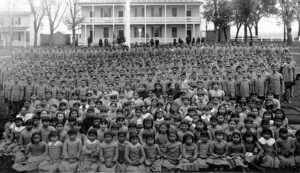 When people allow fear to enter into their thinking, unfortunate and sometimes horrific things can happen. That really was the case, I believe, with the American settlers and the Native Americans. I’m not saying that the treatment of the Indians was without blame, because that is just not the case, but the wars that took place left the American settlers afraid of the Indians, and some people even decided that we needed to basically, “teach it out of them” or change the way the children thought so we could change a generation. It sounds a lot like what is being attempted in our schools today, if you ask me.
When people allow fear to enter into their thinking, unfortunate and sometimes horrific things can happen. That really was the case, I believe, with the American settlers and the Native Americans. I’m not saying that the treatment of the Indians was without blame, because that is just not the case, but the wars that took place left the American settlers afraid of the Indians, and some people even decided that we needed to basically, “teach it out of them” or change the way the children thought so we could change a generation. It sounds a lot like what is being attempted in our schools today, if you ask me.
For over a century, the US government actually went in and took Native American children from their families and forced them to attend Indian boarding schools. The idea was to separate the Indian traditions, language, and culture from these children, so they would become a “man worth saving,” because they thought the Indians had no value. They even recruited the missionaries in their endeavor, with the passing of the Civilization Fund Act of 1819, which encouraged missionaries to educate Native American children in the ways of the white man. In reality, this plan set the stage for eventual forced removal of children from their parents, so the parents could no longer have a say in their education, or an influence in their lives. In 1879, Captain Richard Henry Pratt opened the Carlisle Indian Industrial School. The whole purpose of the school, according to Pratt, was to “kill the Indian, and save the man.”
The schools mistreated the children, because they didn’t want to comply, didn’t understand what was asked of them, or they were just plain scared. Scholar Margaret Archuleta explained, “Not only were children removed from their parents, often forcibly, but they had their mouths washed out with lye soap when they spoke their Native languages.” A 1902 government order even argued long hair and other traditional customs slowed “the advancement they are making in civilization.” These poor children were stripped of their heritage, their families, their traditions, and their right to live a free life of their own choosing.
You might think that this barbaric act was something that was practiced just in the early days of this country and into the Indian Wars era, but these boarding schools actually continued until 1978!! At that time, Congress 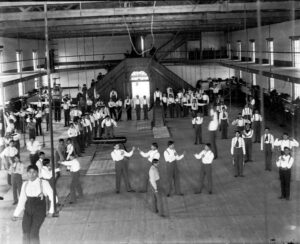
 finally passed the Indian Child Welfare Act, which also addressed the practice of forcible adoption of Native American children. From that time on, Native American families were once again able to practice their own traditions and culture and speak their own language. I wonder just how much of their heritage was lost forever in the 159 years that the children spent in the custody of the American government.
finally passed the Indian Child Welfare Act, which also addressed the practice of forcible adoption of Native American children. From that time on, Native American families were once again able to practice their own traditions and culture and speak their own language. I wonder just how much of their heritage was lost forever in the 159 years that the children spent in the custody of the American government.
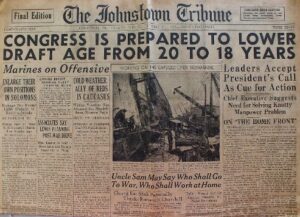 Before the summer of 1971, a person had to be 21 years old in order to vote. That was before the 26 Amendment was signed into law, on July 5, 1971, by President Richard Nixon. The amendment had passed through the Senate, House, and states in record time, lowered the voting age from 21 to 18, but it was not a quick victory. The battle was hard-fought, mostly by young people between the ages of 18 and 21, who were eligible to be drafted, but didn’t have the right to vote. The battle had raged since World War II.
Before the summer of 1971, a person had to be 21 years old in order to vote. That was before the 26 Amendment was signed into law, on July 5, 1971, by President Richard Nixon. The amendment had passed through the Senate, House, and states in record time, lowered the voting age from 21 to 18, but it was not a quick victory. The battle was hard-fought, mostly by young people between the ages of 18 and 21, who were eligible to be drafted, but didn’t have the right to vote. The battle had raged since World War II.
When the United States joined in the World War II war effort, it didn’t take long to find that they were going to need more men. It wasn’t that so many were killed, although that certainly was a problem too, but less than a year in, President Roosevelt and his administration faced a serious dilemma. They had 20 million eligible men who were registered for the draft, but 50% of them were rejected either for health reasons or because they were deemed illiterate. The United States had to have more men, and there was only one place to get them…expand the eligible draft ages. So, on November 11, 1942, Congress approved lowering the minimum draft age to 18 and raising the maximum to 37. Soon after, the slogan “Old enough to fight, old enough to vote” was born. For the over 21 draftees, the right to vote was already theirs, but the 18 to 20 year olds did not, and they felt like if they could be asked to fight and die, they should be able to vote…like ither adults, and much like the fight we have today with “old enough to fight, old enough to drink.” I’m not sure the current protestors will win their battle, however.
The changing of the voting age didn’t come easy either. Many people thought that 18-year-olds were just too young to understand politics. West Virginia congressman Jennings Randolph became the first supporter for lowering the age. In 1942, he introduced the first of 11 bills he sponsored over his tenure in Congress. Despite support from First Lady Eleanor Roosevelt and a number of senators and representatives, Congress failed to pass any legislation. Nevertheless, a popular movement was growing. Finally, in 1943, Georgia became the first  state to lower the voting age for state and local elections to 18, with Kentucky following suit in 1955. It broke the ice. While these young voters couldn’t vote for US offices, they had a say in their own state. The movement to lower the voting age began to gain grassroots traction when newly elected President Dwight D Eisenhower expressed his support in his 1954 State of the Union address, “For years our citizens between the ages of 18 and 20 have, in time of peril, been summoned to fight for America. They should participate in the political process that produces this fateful summons. I urge Congress to propose to the States a constitutional amendment permitting citizens to vote when they reach the age of 18.”
state to lower the voting age for state and local elections to 18, with Kentucky following suit in 1955. It broke the ice. While these young voters couldn’t vote for US offices, they had a say in their own state. The movement to lower the voting age began to gain grassroots traction when newly elected President Dwight D Eisenhower expressed his support in his 1954 State of the Union address, “For years our citizens between the ages of 18 and 20 have, in time of peril, been summoned to fight for America. They should participate in the political process that produces this fateful summons. I urge Congress to propose to the States a constitutional amendment permitting citizens to vote when they reach the age of 18.”
While it was gaining momentum, it was still slow-going. It would not be until much of the American public became disillusioned by the lengthy and costly war in Vietnam in the mid 1960s that the movement to lower the voting age gained widespread public support. “Old enough to fight, old enough to vote” found its way back into the American consciousness in the form of protest signs and chants. The push was revived, and then-Senator Randolph and other politicians continued to push legislation to lower the age to 18, including passing an amendment into 1965’s Voting Rights Act in 1970 that applied lowering the age to federal, state, and local elections. As the amendment was being signed into law, President Nixon thought it might be problematic. He issued a public statement that the federal government regulating state and local elections was likely to be “deemed unconstitutional and that only an amendment would secure this right.” He was right, and the amendment was struck down in the 1970 Supreme Court case Oregon v. Mitchell, ruling that the federal government could not make mandates for state and local elections. That meant that the fight continued. The initial result was a mixed system in which state and local elections had different rules than federal elections. That brought with it logistical problems on election days in states across the country, bringing more protests and lobbying efforts. The biggest problem was the 18 to 20 year olds worrying that their draft numbers were being called despite having no say in electing their representation. “Project 18” continued to put the pressure on legislators to take action. Marches were held all over the nation.

Finally, their hard work paid off. On March 10, 1971, the Senate voted unanimously in favor of a Constitutional amendment lowering the voting age to 18, followed by an overwhelming majority of the House voting in favor on March 23, 1971. The states quickly ratified the amendment, and it took effect on July 1, 1971, nearly 30 years after Senator Randolph first proposed lowering the voting age. In response to its passing, the senator remarked, “I believe that our young people possess a great social conscience, are perplexed by the injustices which exist in the world and are anxious to rectify these ills.” Finally, those who were “old enough to fight” could also vote.
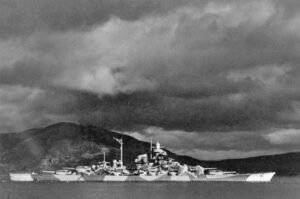 While many people have heard about the sinking of the German ship, The Bismarck, many may not have known that the Bismarck had a sister ship called the Tirpitz. Both ships were quite likely the same level of severity of threat to the war effort, but the Tirpitz somehow didn’t stand out as much…possibly because of the song that was written called “Sink the Bismarck” by Johnny Horton, and the fact that the Bismarck sank the Royal Navy battleship, HMS Hood, and that was the sinking than was the first and last straw before the Bismarck was taken down.
While many people have heard about the sinking of the German ship, The Bismarck, many may not have known that the Bismarck had a sister ship called the Tirpitz. Both ships were quite likely the same level of severity of threat to the war effort, but the Tirpitz somehow didn’t stand out as much…possibly because of the song that was written called “Sink the Bismarck” by Johnny Horton, and the fact that the Bismarck sank the Royal Navy battleship, HMS Hood, and that was the sinking than was the first and last straw before the Bismarck was taken down.
Nevertheless, the Tirpitz, commissioned in 1941, posed a grave threat to Allied shipping too. The Tirpitz was the German Navy’s mighty 42,900-ton battleship that carried a main armament of eight 15-inch guns. The ship saw limited action, however, spending most of its war career in Norwegian waters where it posed a constant danger to Allied convoys that were bound for Russia. Because the ship was in those waters, the Allies were forced to maintain a large fleet in northern waters to guard against the Tirpitz and repeated attempts were made by both the Royal Air Force and Royal Navy to sink the menacing ship. During the short life of the Bismarck, the battleship sank one ship…HMS Hood, and then the Royal Navy took the ship down. The Tirpitz was a menace a bit longer, but it never actually sank a ship. It took part in a number of battles, mostly shoot at other ships, but sinking none. Still, the possibility was always there that the Tirpitz could take out ships belonging to the Allies.
The Royal Air Force tried to take out the Tirpitz before it even set sail, by bombing it in January of 1941 while it  was being completed in a Wilhelmshaven dry dock. Somehow, the bombs actually “straddled” the battleship, missing it, and doing very little damage. Tirpitz was attacked again later in 1941 by twin engined bombers and in April 1942, when it was located and attacked by Halifaxes and Lancasters. Unfortunately, no bombs found their target that time either. The Royal Navy also attempted to take down the ship on a number of occasions with miniature submarines and carrier-based aircraft. Those attacks hit their mark, but had little effect, because Tirpitz had a double layer of armor plating. Finally, British inventor, Sir Barnes Wallis, built a special bomb for the job. He had previously developed the bouncing bomb used in the Dambusters Raid, so his inventions were trusted. In 1944 he devised the “Tallboy,” a 12,030-pound weapon capable of piercing the Tirpitz’s armor plating.
was being completed in a Wilhelmshaven dry dock. Somehow, the bombs actually “straddled” the battleship, missing it, and doing very little damage. Tirpitz was attacked again later in 1941 by twin engined bombers and in April 1942, when it was located and attacked by Halifaxes and Lancasters. Unfortunately, no bombs found their target that time either. The Royal Navy also attempted to take down the ship on a number of occasions with miniature submarines and carrier-based aircraft. Those attacks hit their mark, but had little effect, because Tirpitz had a double layer of armor plating. Finally, British inventor, Sir Barnes Wallis, built a special bomb for the job. He had previously developed the bouncing bomb used in the Dambusters Raid, so his inventions were trusted. In 1944 he devised the “Tallboy,” a 12,030-pound weapon capable of piercing the Tirpitz’s armor plating.
The ship was doomed, and on November 12, 1944, thirty Lancasters took off from Scotland flying in clear weather flew at 1,000 feet to avoid early detection by enemy radar prior to rendezvousing at a lake 100 miles southeast of Tromso. The attacking force then climbed to bombing height of between 12,000 and 16,000 feet. The Tirpitz was sighted from about 20 miles away. The crew called for air cover…frantically, but no cover came. They were sitting ducks when the Lancasters passed over the last mountain and the fjord with the Tirpitz came into view. When the bombers were about 13 miles away, the Tirpitz began firing their anti-aircraft guns. They 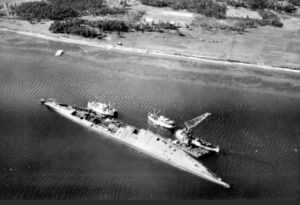 were joined by shore batteries and two flak ships. It was not enough. The Lancasters released their bombs were released and waited thirty long seconds for the results. The first bombs narrowly missed the target, but then a great yellow flash burst on the foredeck and the Tirpitz was seen to tremble as it was hit by at least two Tallboys. Smoke shot up to about 300 feet and the ship had started to list badly. Then a tremendous explosion was heard as the ammunition stores magazine went up. The ship rolled over to port and capsized. After 10 minutes only the hull visible from the air. Approximately 1000 of her crew were killed. The attacking aircraft, all with only minimal damaged returned safely to base. The Tirpitz was gone…finally.
were joined by shore batteries and two flak ships. It was not enough. The Lancasters released their bombs were released and waited thirty long seconds for the results. The first bombs narrowly missed the target, but then a great yellow flash burst on the foredeck and the Tirpitz was seen to tremble as it was hit by at least two Tallboys. Smoke shot up to about 300 feet and the ship had started to list badly. Then a tremendous explosion was heard as the ammunition stores magazine went up. The ship rolled over to port and capsized. After 10 minutes only the hull visible from the air. Approximately 1000 of her crew were killed. The attacking aircraft, all with only minimal damaged returned safely to base. The Tirpitz was gone…finally.

